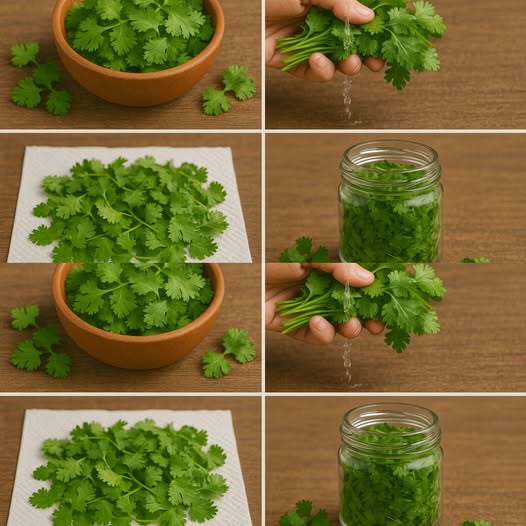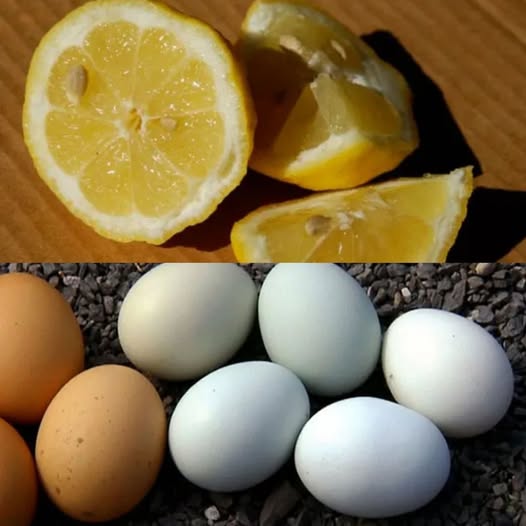Introduction:

There’s nothing worse than reaching into the fridge, excited to top your dish with fresh cilantro—only to find it wilted, slimy, or completely unusable. Sound familiar? You’re not alone. Cilantro, also known as coriander leaves, is notorious for spoiling quickly. In fact, studies show leafy herbs like cilantro can lose up to 50% of their moisture within just 48 hours, leading to rapid spoilage.
But here’s the good news: you can preserve cilantro for months without it going bad—with the right methods.
This blog dives deep into the 10 best, proven ways to store cilantro, so you never waste another bunch again. Whether you use it daily or sparingly, these preservation techniques will save you time, money, and frustration.
Let’s dig in!
Why Does Cilantro Go Bad So Quickly?
Cilantro is a delicate leafy herb with high water content and tender stems, which makes it especially prone to moisture loss and microbial growth. Without proper storage, it starts to yellow, wilt, and rot within days.
The key to long-lasting cilantro is to control moisture, temperature, and air exposure. Luckily, with a few smart tricks, you can extend its freshness from a few days to several months.
10 Proven Ways to Preserve Cilantro for Months
1. Store in a Glass Jar with Water (Fridge Method – Up to 3 Weeks)
Why it works:
This method mimics a flower vase, keeping stems hydrated and leaves fresh.
How to do it:
- Trim the bottom of the cilantro stems.
- Place the bunch in a glass jar with about 1–2 inches of water.
- Cover the top loosely with a plastic bag.
- Store in the fridge.
- Change the water every 2–3 days.
📌 Pro Tip: Add a paper towel inside the bag to absorb moisture and prevent rot.
2. Freeze Whole Leaves with Olive Oil (Up to 6 Months)
Why it works:
Oil protects against freezer burn and locks in the herb’s aromatic flavor.
How to do it:
- Wash and dry cilantro thoroughly.
- Chop or leave whole.
- Place in ice cube trays.
- Add olive oil to cover.
- Freeze, then transfer cubes to a sealed bag.
✅ Use directly in soups, stews, and sautés.
3. Dry Cilantro with a Dehydrator or Oven (Up to 12 Months)
Why it works:
Drying removes moisture completely, preventing microbial spoilage.
How to do it:
- Wash and pat dry.
- Spread leaves in a single layer.
- Use a dehydrator at 95°F (35°C) or an oven at lowest temp (under 170°F / 75°C).
- Store in airtight containers.
⚠️ Drying slightly changes flavor—best used in cooked dishes.
4. Freeze as a Cilantro Paste (Up to 6 Months)
Why it works:
Blended paste retains flavor and is easy to portion.
How to do it:
- Blend cilantro with a little water or oil.
- Spoon into ice cube trays.
- Freeze and store cubes in sealed freezer bags.
🧠 Perfect for marinades, sauces, and stir-fries.
5. Roll in Paper Towels and Zip in a Bag (Up to 2–3 Weeks)
Why it works:
The towel absorbs moisture and reduces exposure to air.
How to do it:
- Dry the cilantro fully.
- Wrap loosely in a dry paper towel.
- Place in a resealable plastic bag.
- Keep in the fridge’s vegetable drawer.
💡 Make sure not to seal the bag airtight—some airflow helps.
6. Make Cilantro Butter (Up to 3–6 Months in Freezer)
Why it works:
Butter acts as a preservative and flavor enhancer.
How to do it:
- Mix softened butter with finely chopped cilantro.
- Roll into a log and wrap in parchment paper.
- Freeze and slice as needed.
🍳 Use on steaks, veggies, toast, or seafood.
7. Store with Silica Gel Packets (Up to 1 Month in Fridge)
Why it works:
Silica gel controls humidity, preventing wilting and mold.
How to do it:
- Place cilantro in an airtight container with food-safe silica gel.
- Wrap in paper towels.
- Keep chilled.
💼 This is a technique even chefs use in commercial kitchens!
8. Vacuum Seal with Moisture Control (Up to 2 Months in Fridge / 6 Months in Freezer)
Why it works:
Vacuum sealing minimizes oxidation and spoilage.
How to do it:
- Dry cilantro thoroughly.
- Use a vacuum sealer with moisture settings.
- Seal in portioned bags and refrigerate or freeze.
🔒 Perfect for bulk storage and long-term use.
9. Pickle Cilantro Stems (Up to 3 Months)
Why it works:
Pickling preserves the flavor and adds tangy versatility.
How to do it:
- Use vinegar, water, sugar, and spices to pickle stems.
- Store in sterilized jars in the fridge.
🥗 Add to tacos, sandwiches, or grain bowls for a punch of flavor.
10. Salt Preservation Method (Up to 6 Months)
Why it works:
Salt draws out moisture and acts as a natural preservative.
How to do it:
- Finely chop cilantro.
- Layer it with salt in a jar (2:1 ratio cilantro to salt).
- Press down to eliminate air gaps.
- Keep refrigerated.
🍲 Use sparingly as a seasoning agent.
Frequently Asked Questions (FAQs)
Q1: Can you freeze cilantro without it turning black?
Yes, the trick is to freeze it either with oil (as cubes) or as a paste. These methods prevent oxidation, which causes discoloration.
Q2: Is dried cilantro as good as fresh?
Not quite. While dried cilantro works in soups and stews, it lacks the bold, citrusy aroma of fresh leaves. Use dried versions in cooked dishes, and fresh (or frozen) for garnishes.
Q3: How do restaurants keep cilantro fresh?
Professional kitchens use methods like storing upright in water, vacuum sealing, or using humidity-controlled refrigerators to keep herbs fresh for days.
Q4: How long can fresh cilantro last in the fridge?
With standard refrigeration, it lasts 3–5 days. Using preservation methods from this list can extend that up to 3 weeks or longer.
Q5: What’s the best method if I use cilantro weekly?
If you use it weekly, try the glass jar with water or the paper towel method for fresh use. For long-term storage, freeze in oil or as a paste.
Key Takeaways:
- Cilantro doesn’t have to be a short-lived herb.
- Moisture control, airtight storage, and freezing are the top 3 factors in long-term preservation.
- With methods like oil freezing, vacuum sealing, and drying, you can save cilantro for up to a year.
- These solutions also reduce food waste and cut grocery costs.
Conclusion: Stop Letting Cilantro Go to Waste
Cilantro is one of the most flavor-packed herbs in the kitchen, yet it’s heartbreakingly delicate. With food waste becoming a global issue—Americans throw away 30–40% of their food annually—preserving herbs like cilantro is not only smart but essential.
By implementing one (or more) of these 10 preservation methods, you’ll never have to toss slimy cilantro again. Whether you’re a home cook, meal prepper, or restaurant owner, these hacks will keep your herbs fresh, flavorful, and ready whenever inspiration strikes.
So go ahead—buy that extra bunch. You’ve got the tools to make it last.


